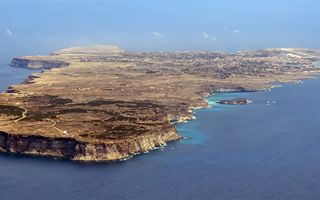(Finance) – The Atmospheric Observatory AENEAS Of Lampedusa he entered the World Radiation Monitoring Center (WRMC), the large archive of the global Baseline Surface Radiation Network (BSRN), which provides data on solar and infrared radiation fluxes for the validation of satellite observations and the modeling climate. The result – achieved after a six-month evaluation period – was obtained thanks to the excellent quality of the collected measurements, their uniqueness and representativeness of the vast area of the Central Mediterranean.
The BSRN archive collects measurements of solar and infrared radiation fluxes from 43 reference stations located in climatically significant areas of the planet and is available on the PANGAEA portal, the digital data library of Earth Sciences.
“The radiative budget of the Earth-atmosphere system plays a fundamental role in determining the thermal conditions and circulation of the atmosphere and the ocean, influences the hydrological cycle and contributes to determining the main characteristics of the Earth’s climate”, underlines Daniela Melons of the ENEA Laboratory of Models and Measurements for Air Quality and Climate Observations, responsible for the Observatory’s measurements within the BSRN network. “The measurements of the composition and on the structure of the atmosphere which are conducted together with those of radiation are fundamental to understand the variations of the balance radiative. To give an example: the increase in the concentration of greenhouse gases over time is causing the temperature to increase, which in turn has a strong impact on the infrared radiation emitted by the atmosphere”, concludes Meloni.
Since 2004 the ENEA Atmospheric Observatory of Lampedusa, near the Cape Grecale lighthousecarries out measurements of radiation fluxes at the surface, which are also made available to the scientific community. In 2016, furthermore, the measurements of the Atmospheric Observatory were joined by those carried out at sea by theOceanographic Observatorylocated 5 kilometers from the coast, for the study of air-sea interaction and, more recently, those conducted in the new Terrestrial Ecosystem Observatory, in the western part of the island, to evaluate the exchanges of CO2 between vegetation and the atmosphere.
To date, the Lampedusa Observatory is considered a international reference point for research on climate processes at a global level: it is in fact able to offer the scientific community integrated information on the marine, terrestrial and atmospheric sectors in Mediterraneana region representative of what happens on a global scale but where climate change impacts with amplified effects. With its data, the Integrated Observatory contributes to various global climate measurement networks (for example the Global Atmosphere Watch of the World Meteorological Organization or the Aerosol Robotic Network managed by NASA) and to the main European environmental research infrastructures, both on the carbon cycle in the atmosphere, sea, ecosystem (Integrated Carbon Observing System, ICOS) and on the detection of atmospheric components (Aerosol, Clouds, and Trace gases Research Infrastructure, ACTRIS) and marine (European Multidisciplinary Sea Floor and Water Column Observatory, EMSO).
